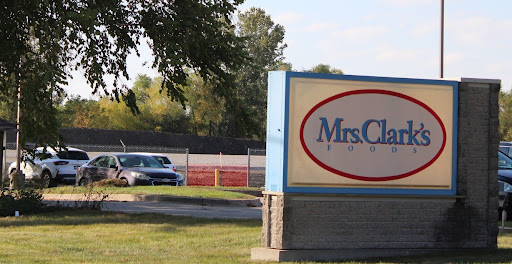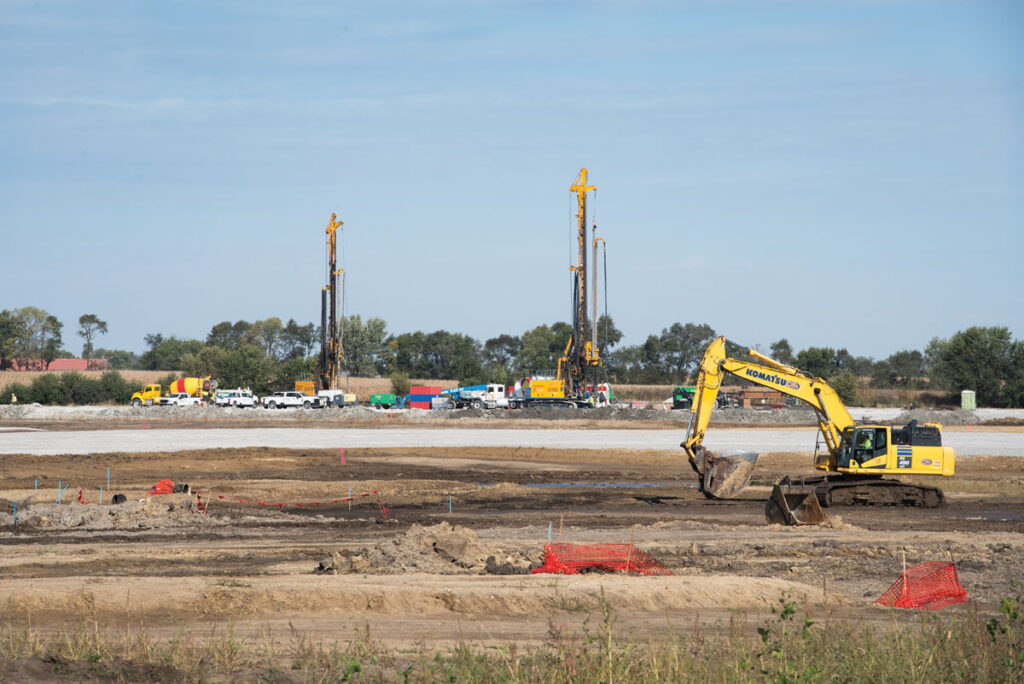Economic outlook panel checks in on Iowa economy

Gigi Wood Apr 30, 2025 | 11:10 am
4 min read time
900 wordsAll Latest News, Economic Development, Government Policy and LawAt an economic outlook panel held Tuesday by the Greater Des Moines Partnership, statewide economists and a business consultant discussed how tariffs, inflation, interest rates and federal funding changes have affected various industries in Iowa, as well as trends they’re seeing in their work. Some of the uncertainty of the current climate, they advised, can be manageable with the right amount of planning.
Tiffany Tauscheck, president and CEO of the Partnership, shared results from the U.S. Chamber of Commerce’s April economic conditions report, which stated that the economy grew by 2.8% in 2024 and remains resilient despite many challenges.
The Partnership also recently conducted a survey of its members about the economy. Of the 130 who responded:
- 74% of participants rated the health of the local economy as steady or strong.
- Inflation, regulatory uncertainty and workforce availability were selected as the toughest local business challenges.
- Strategic partnerships, technological innovation, and talent development and recruitment were designated as the top opportunities in the coming 18 months.
- 57% of respondents felt very confident in their organization’s ability to grow over the next year.
“These takeaways give us a real-time pulse on how our region is navigating a complex economic landscape,” Tauscheck said.
Webinar panelists included Chad Hart, an economics professor at Iowa State University, Jeffrey Kappen, a partner at Bâton Global and associate business professor at Drake University, and Anne Villamil, an economics professor at the University of Iowa. Panelists noted that their observations capture a moment in time, and with many new labor and economic reports coming out this week, those reflections could change.
Editor’s note: Additional takeaways from this panel discussion will be shared in upcoming Business Record Daily e-newsletters.
Agriculture is the ‘sector to watch’ amid uncertainty
While the overall Central Iowa economy has been healthy, the agriculture industry has been struggling. Kappen mentioned the saying “when agriculture sneezes, Iowa catches a cold,” and the three financial experts agreed that agriculture will be the sector to watch during this period of uncertainty.
“I think we need to pay some pretty close attention to the headwinds that the agricultural sector is likely to face in 2025,” Kappen said.
Commodity prices have fallen 20%-40% during the past few years, Hart said.
“That has limited farm income, and that’s why we have seen some moves even before the tariffs, sort of indicating that weakness in the agricultural economy. For example, the layoffs at John Deere,” he said.
While many national economic experts have discussed rebalancing the supply chain by finding new, domestic sources of the inputs used in manufacturing, that process has proved difficult for agriculture, Hart said.
“You may have seen stories over the past month or so about potash, an important fertilizer for Iowa agriculture,” he said. “That is mainly imported from Canada. We’re seeing trade policies, if you will, be reshaped based upon the importance of certain inputs within certain factors. For example, potash was treated as an energy product when discussing the tariffs, possibly upon Canada, where most products would face a 25% tariff. If it were an energy product, it would only face a 10% tariff rate. President [Donald] Trump moved potash into the energy category to provide that lower level of tariff rate because of its strategic importance [in agriculture].”
Some farmers are wondering if agriculture’s poor performance will bring down the general economy, or if the general economy will boost the agricultural economy, Hart said.
“There is this uncertainty within the relationship between our agricultural economy and our general economy right now that is leading to more concern as I talk with farmers around the state,” he said. “They have been more aggressive by making forward purchases to avoid price increases here, and at the same time, too, trying to figure out how you either stockpile the inputs that you’re going to need right now, or at least pre-purchase those, and trying to lock those prices in place to avoid the pricing uncertainty as we go forward over the next few months.”
The agriculture industry has been tightening its belt for a while, as costs of labor and inputs have increased.
“We’re looking at a much tighter market situation when we’re looking at the profitability on the farm,” Hart said. “That’s broadening out as we look at our small towns within the state of Iowa that have mainly depended upon ag-related industries as their main focus of growth and as their economic engine.”
Kappen wondered how agricultural producers will pivot and adapt to the probable loss of purchases from USAID.
“For some agriculture producers, their largest domestic consumer, which would have been USAID, will likely not be buying this year. How will they rally and pivot? I think it is a big question,” he said.
He pointed to the latest gross domestic product and personal income report by the U.S. Bureau of Economic Analysis, which was released March 28. In terms of GDP performance, Iowa ranked 49th at -0.5% growth. North Dakota ranked 50th at -0.7%.
“When they released their 2024 report a couple weeks ago, Iowa was one of only two states at the verge of shrinking and that was about agricultural output, trade uncertainty and the labor supply,” Kappen said. “I think as a local community in [the] region, it’s going to require some thoughtful leadership for us to decide how we adapt and pivot moving forward if these conditions persist over the medium to long term.”

Gigi Wood
Gigi Wood is a senior staff writer at Business Record. She covers economic development, government policy and law, agriculture, energy, and manufacturing.









